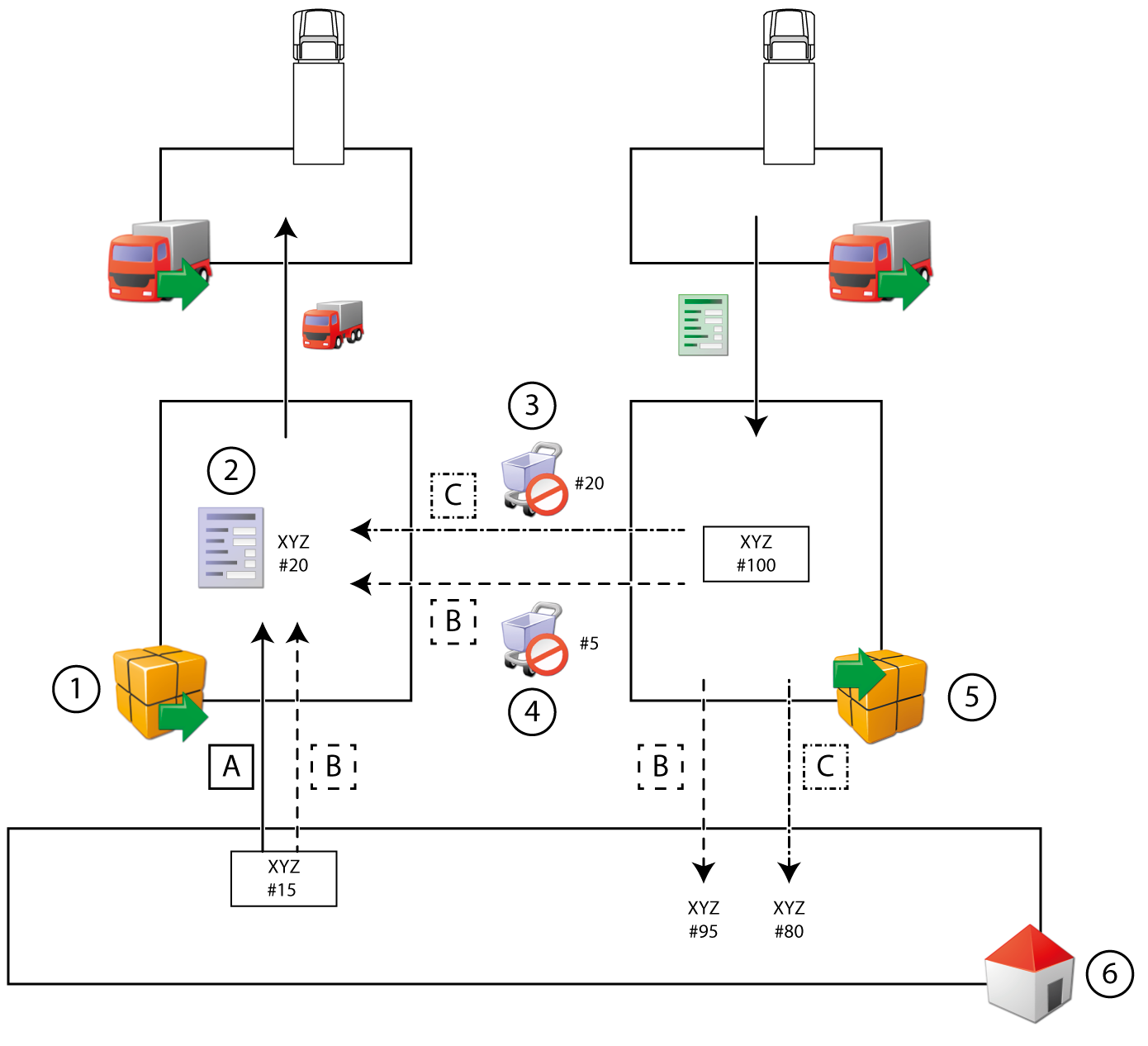Backorders
When allocating a delivery or production order, backorders can be created for certain order lines if the order requires inventory that is not yet available. A backorder is a new order that is created from an existing order line. The example below shows an order of 20 units of item XYZ.
When creating an order (2), the order line allows for the following possible backorder options (See Example backorder):
- No backorders (A): The order is executed from the available inventory in the warehouse (6), even if there is a shortage. In the example 15 units are transported to the marshaling area (1).
- Shortage in backorder (B): The order is executed with the available inventory from the warehouse (6). A backorder (4) is created for the shortages. In the example 15 units are transported to the marshaling area (1) and a backorder (4) is created for the remaining 5 units.
- All in backorder: The ordered quantity is put entirely in backorder (3), regardless of the available inventory. In the example a backorder (3) is created for the 20 units.
Upon confirmation of receipt of the goods in the inbound area (5), Objective will check whether a received logistic unit can be assigned to an open backorder line. If so, Objective will allocate the received quantity for the backorder and create a crossdock task (instead of a putaway task).

If the inventory is pre-received, received or produced, a crossdock job will be created to bring the inventory directly to the correct location.
By configuring crossdock rules via the Configurator, it can be determined how and when crossdock tasks will be created, and which (pre-)received or produced inventory will be linked to which backorder.
For backorders with a PLE group and a due date, the allocation and the deallocation can be automatically handled by PLE, and for the related crossdock lists this applies for the release.
Uniform, mixed and nested LPNs can be crossdocked.
